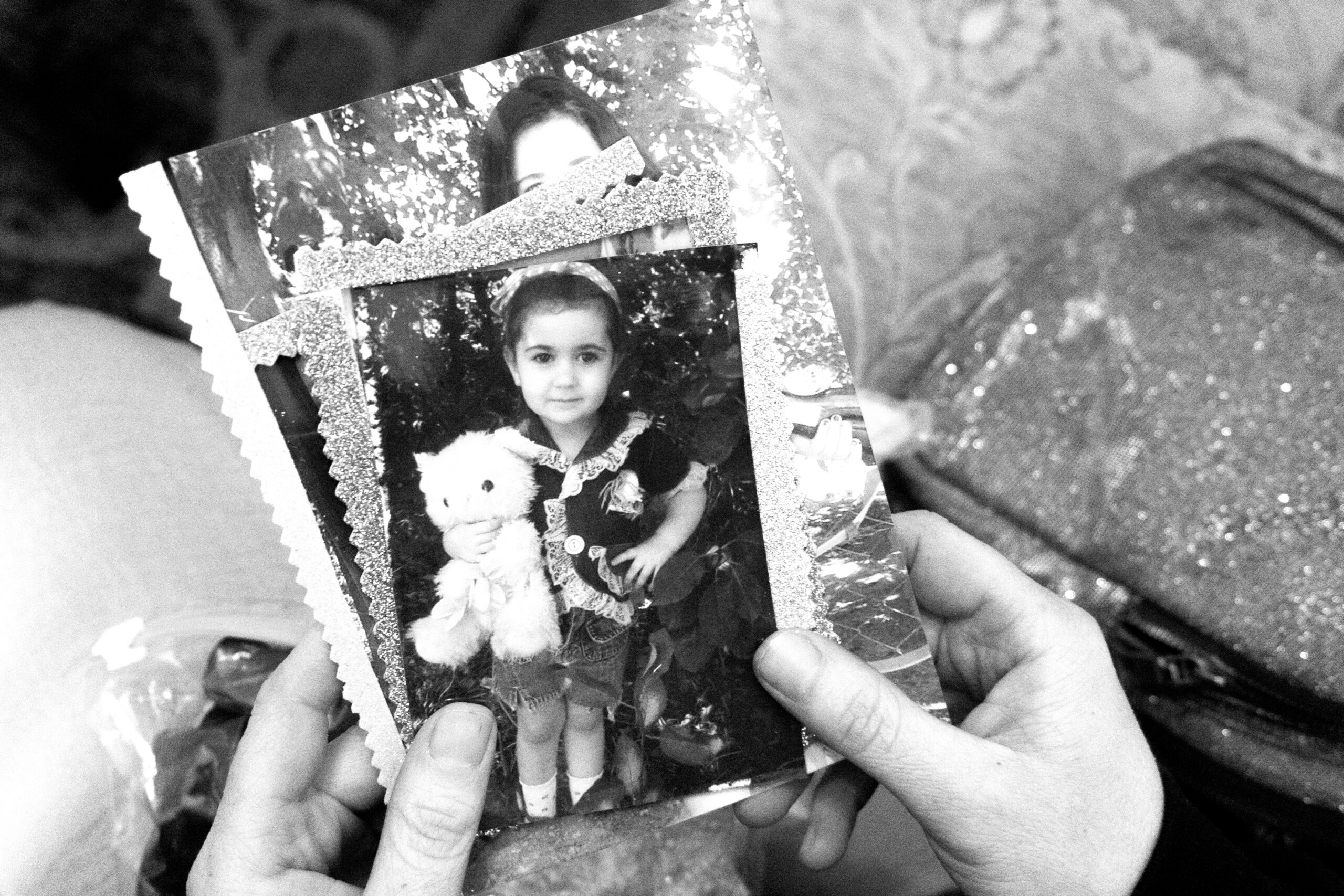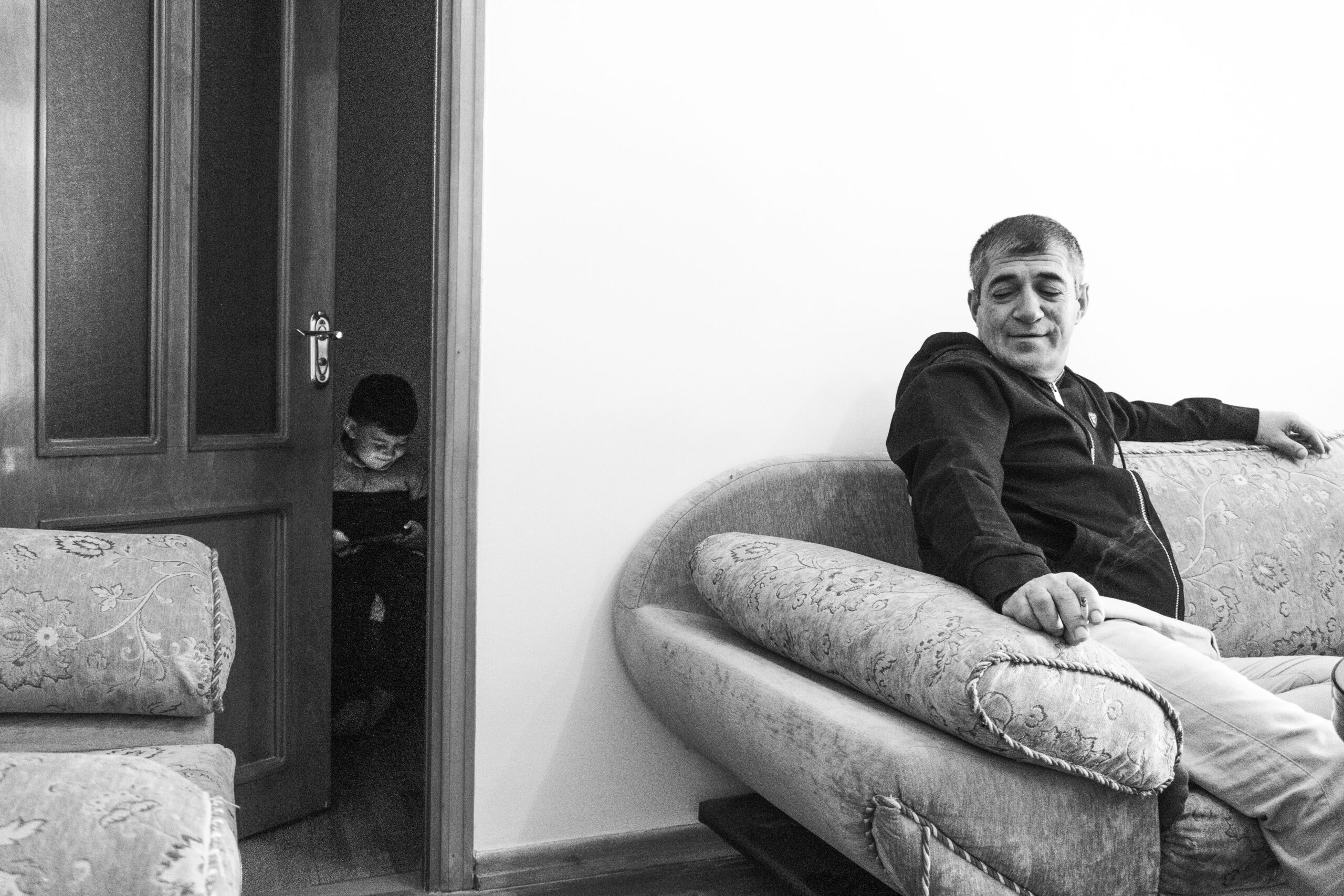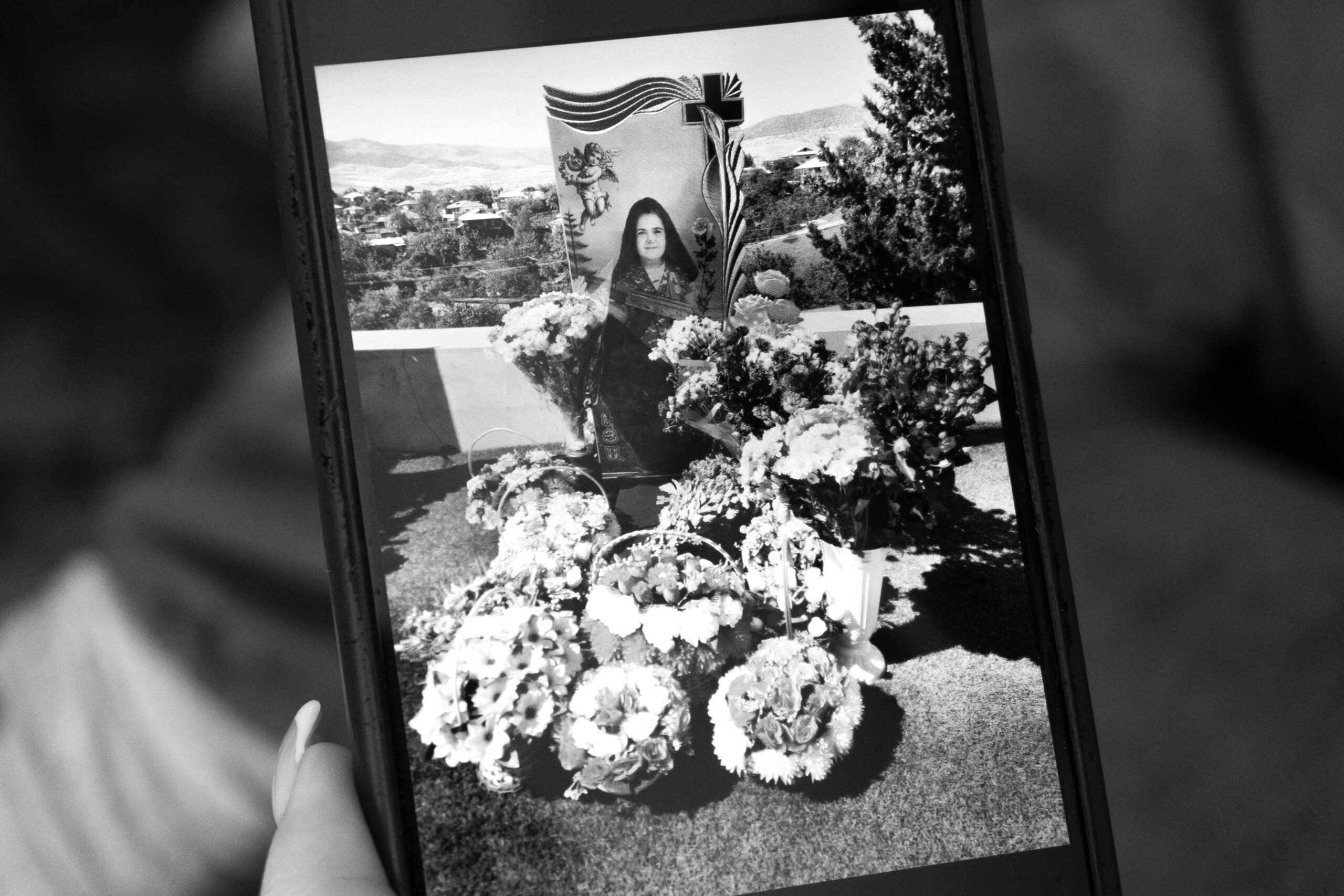Images by Ani Gevorgyan
Editor’s note: This interview is one of five in a series conducted by Shushan Papazyan and Ani Gevorgyan documenting the stories of children killed by Azerbaijani aggression in Artsakh. The series will be featured in the Armenian Weekly throughout the coming weeks.
***
From 2016-2023, various phases of the Artsakh conflict—from the Four-Day War to the mass displacement—claimed the lives of many civilians, including children.
The exact number of children killed is difficult to determine due to conflicting reports. According to a report compiled by the Tatoyan Foundation, 21 civilians, including six children, were killed as a result of Azerbaijan’s attack on Artsakh on Sept. 19, 2023.
Documenting the stories of children killed by Azerbaijani aggression in Artsakh reminds us that behind every statistic is a human life—with dreams, hopes and visions of a future cut short by violence.
Anahit Grigoryan shared her heartbreaking story in an interview conducted by the author.
Anahit brings a blue suitcase to the center of the living room and takes out items belonging to her eight-year-old daughter Victoria: a school bag, pink and shiny clothes, certificates and family photos showing the Gevorgyan family altogether.
Anahit opens this suitcase often. She takes out the girl’s clothes to wash and iron, then puts them back. This is the only thing left in memory of her daughter.
Victoria Gevorgyan died in Martuni on September 27, 2020, when the house yard was shelled. Her mother Anahit, brother Artsvik, relatives and two neighbors were injured in the attack.

Victoria’s father, Igor Grigoryan, recounts the details of that day. Anahit cannot bring herself to speak about it, only occasionally interjecting as her husband speaks. She watches silently as their eldest daughter, Gohar, plays with her younger brother in the living room.

The family awoke to the sounds of shelling and understood that a war had begun. Anahit dressed the children and embraced her son Artsvik, who was only two years old at the time.
When the shelling began, Igor wanted to take the family to the basement. As they stepped outside, an unmanned aerial vehicle heavily bombed the yard. “They were firing from 7 in the morning. They hadn’t hit the house before the fighting. That’s why we came out to the yard to go to the basement. We didn’t think they would fire at the house,” Anahit says.
“A big wave of smoke rose, deafening our ears. For a few minutes, I didn’t understand where my husband or children were. The impact had thrown everyone to one side. I got myself together and looked for the children. Victoria was unconscious. Artsvik was covered in blood. I was covered in blood, but I rushed to help the children. My hands were bloody. I embraced Victoria. We were calling for help to save them. There were many wounded,” the mother recalls.
Her husband managed to carry the injured into the car and drove them to the hospital. “There was a bus in the yard. Sometimes, I drove it to work. I never thought that, one day, I’d use it to take my family to the hospital,” Igor says.

Anahit said that she felt no pain. They placed children, relatives and neighbors, in the vehicle—on the seats and floor—however they could. Throughout the journey, there was firing in the direction of the car.
The hospital in Martuni was overwhelmed. Wounded people kept arriving. The family was forced to separate. Anahit remained in Martuni with Victoria, while Artsvik was taken to Stepanakert with serious injuries, along with Igor. On October 2, he was transferred to Armenia.
“Artsvik had many injuries—to his head, legs, hands. He underwent many surgeries, probably 18 in Artsakh and another eight in Armenia. Fragments were lodged throughout his body. They were afraid to operate. We barely managed to save him,” Anahit explains.

First visit after treatment: The cemetery
Anahit remembers handing Victoria over to the doctors while covered in blood. Her legs gave out, and she fell to the floor. Victoria’s death was recorded right there in the hospital. Fragments had struck her heart and throat.
After receiving news of Victoria’s death, Anahit’s condition worsened. She was transferred to Stepanakert, and Victoria’s body was sent for forensic examination.
“I wasn’t worried about my health, despite having serious injuries to my leg and hands. They kept me in a hospital room at the Stepanakert maternity ward for a few days and took care of my wounds. Then, I convinced the doctors that I was fine. I needed to be next to my son in the children’s hospital. If I had stayed at the maternity ward, they wouldn’t have let me be with my son,” she recalls.
On October 1, Igor and fellow villagers buried little Victoria in Martuni. Anahit was in the hospital with Artsvik, assisted by her two daughters, who had not been injured.
“I don’t know what I was feeling. I had turned to stone. I knew I had to take care of my son. He needed me. That’s why I kept myself strong, so I wouldn’t break down. My daughters were helping me,” says Anahit.
Two days after Victoria’s funeral, Igor moved the family to Armenia to continue treatment. Anahit and her son underwent rehabilitation and multiple surgeries in different hospital wards.

Two months later, the family reunited in Martuni. Anahit visited her daughter’s grave for the first time on November 19.
“Artsvik saved me. I was taking care of him, thinking that at least he would be saved. Even after returning, I always thought about my son’s health. He was five years old when he started reintegrating into his surroundings—playing, talking, not being afraid of loud noises. We were focused on him,” she says.
After returning to Martuni, the family settled in another house. They tried to rebuild their lives and recover.
Artsvik now sits in his mother’s arms, counting both their scars. His father knows where these wounds came from, but says they don’t talk about it often. Just as he was starting to recover, the assault on Artsakh began in September 2023.
“Artsvik was with his father. They managed to run to the basement. I was at home with the girls. I was scared to death, thinking something might happen again. My husband called, said they were fine. I calmed down,” Anahit says.
Days earlier, Anahit had visited Victoria’s grave. The last visit was on September 27, 2023, before leaving their home for Armenia again. Now, they cannot visit their daughter’s grave. The family has not submitted any applications to exhume Victoria’s body, confident they will return to their homeland one day.

In Armenia, the family runs a small bread production business. Anahit spends hours working with dough—it’s the only way she can forget the pain. Her husband also helps with the baking. A photo of Artsvik in a military uniform as a child is taped to the bakery window. “We continue living for him,” says Igor.
Little Victoria’s memory in a school bag


In 2023, as the Grigoryan family was preparing to leave their home, it was difficult for Anahit to decide what to take in memory of her daughter.
In a corner dedicated to her memory are Victoria’s beloved doll, school photos and fresh flowers, which Anahit replaces often. She rereads her daughter’s handwritten notebooks. She says Victoria was an exemplary student and mainly did her schoolwork on her own.
Now, on Victoria’s birthday—December 27—the family visits the grave of their city head, Aznavur Saghyan. “At least, there’s one place we can go,” the father says.

This piece is translated from the original Armenian, which was published on MediaLab.am.
Author information
The post A childhood preserved in a suitcase appeared first on The Armenian Weekly.


















